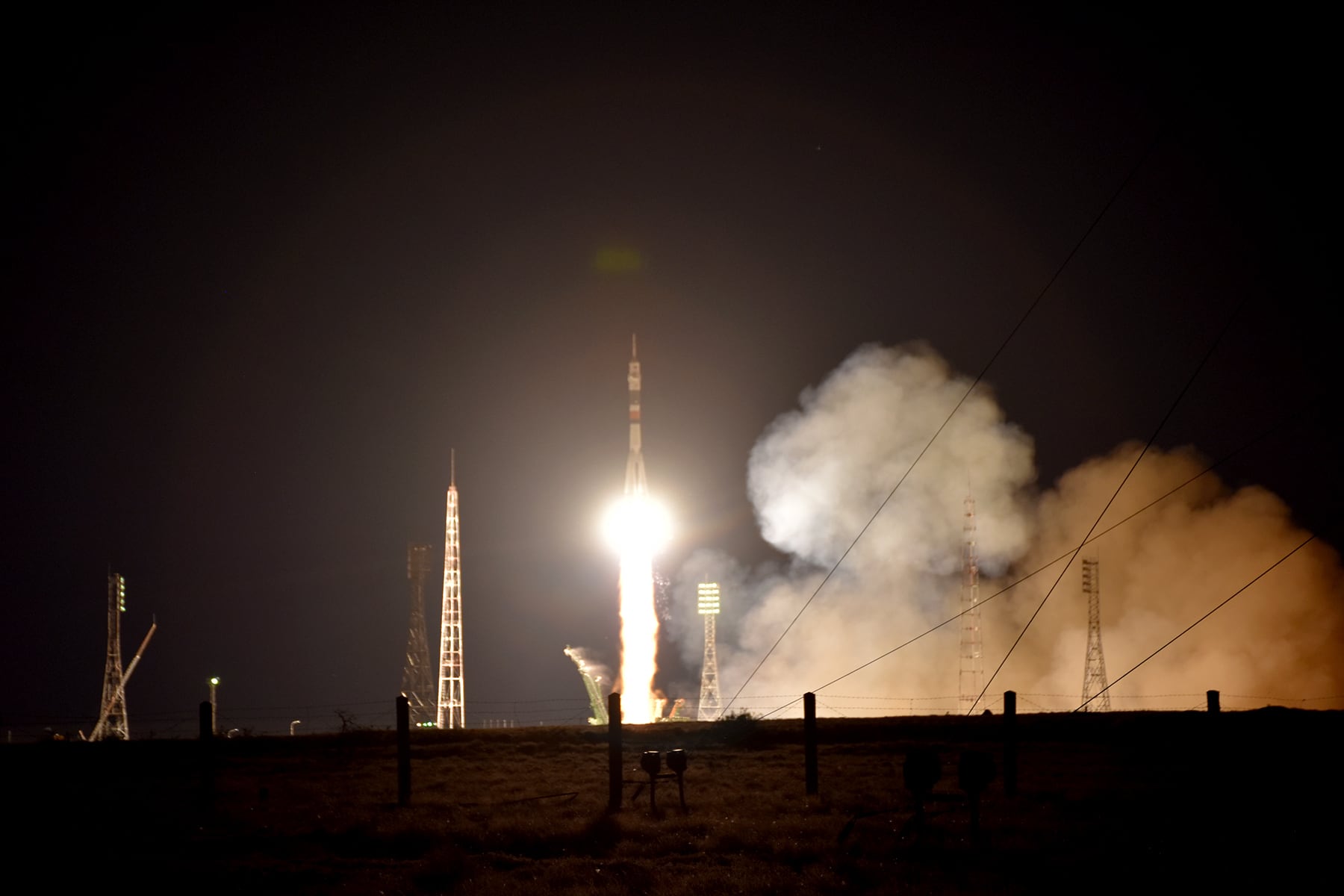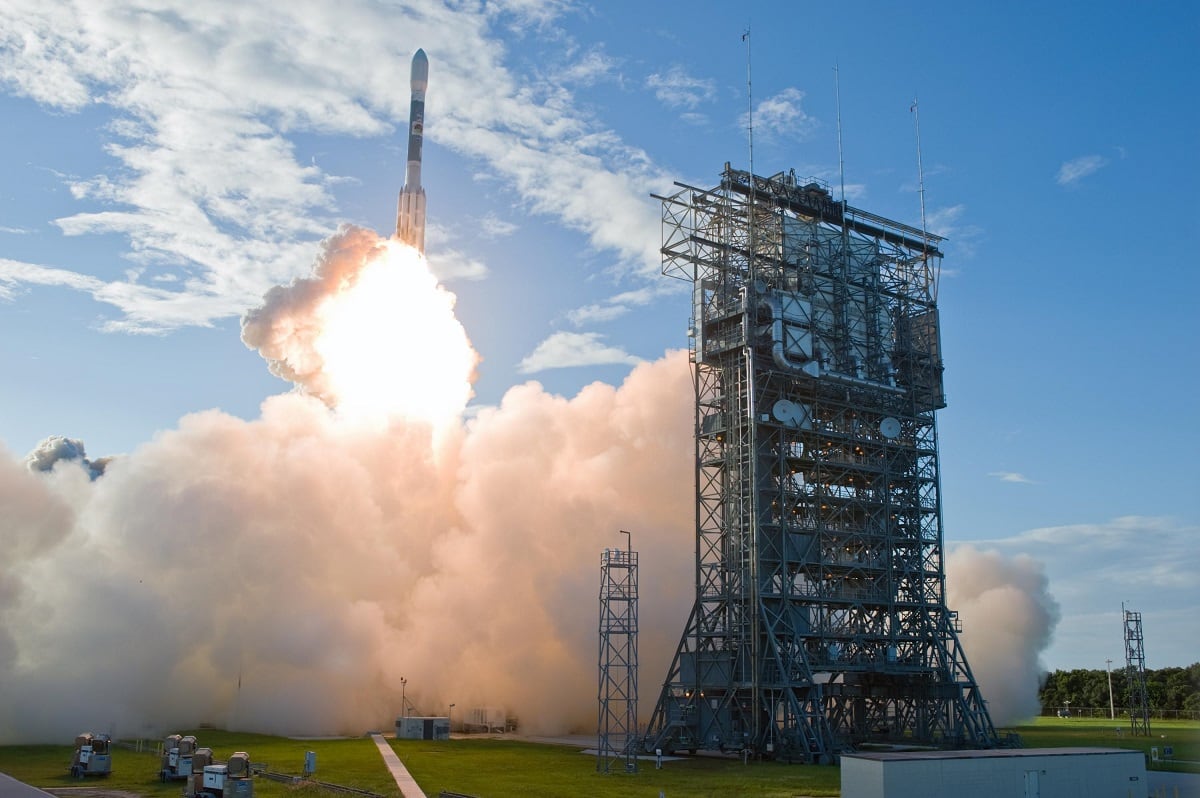WASHINGTON — Congress has backed off its push for a space-based missile intercept layer, which it had pursued in previous years, in the conference report of the fiscal 2020 defense policy bill.
The House and Senate have agreed to repeal a requirement laid out in the FY18 National Defense Authorization Act, which called for the Missile Defense Agency director to establish a space test bed to conduct research on an intercept layer in space.
The FY18 language requiring the MDA to pursue an intercept layer for ballistic missiles in space was contingent on what would be directed in the yet-to-be-released Missile Defense Review. The FY19 NDAA contained similar language but required the MDA to move forward regardless of whether the revoew directed the activity or not.
The Missile Defense Review, when it came out in January 2019, did not call for investments in space-based interceptors. Instead, the Pentagon planned to launch a study, lasting perhaps six months, to look into the most promising technologies and come up with estimates for cost and time. After the study, the Defense Department would consider the findings before choosing whether to move forward, according to the plan.
RELATED

Putting interceptors in space has been controversial from a technological capability standpoint to a cost perspective to the idea that it could trigger an arms race in space.
And the MDA didn’t do much to fund research and development in the space-based interceptor arena in its FY20 budget besides allocating less than $15 million toward feasibility studies.
Notably, the possible repeal of a requirement to establish a test bed isn’t a disruptive move: The MDA was somewhat reluctant to dive into spending money on developing an intercept layer due to its other pressing priorities and its more practical commitment to a space-based missile defense sensor layer.
RELATED

According to Tom Karako, a missile defense analyst at the Center for Strategic and International Studies, the test bed budget request in FY20 was very small and the idea of fielding such a test bed in 2020 also didn’t seem feasible, so it’s likely Congress acknowledged the MDA’s lack of appetite and the lack of practicality in the FY18 requirement.
Congress also didn’t prohibit MDA efforts to research and develop an intercept layer in space, Karako acknowledged. If the MDA still wants to assess the feasibility, it could do so because such an effort would not require much funding, he added.
Meanwhile, Congress is not backing away from a space-based sensor layer, which is in line with the Pentagon’s sense of urgency in developing what is deemed an important and much-need capability across the services.
Also in the conference report of the defense policy bill, Congress is requiring the MDA director to begin on-orbit testing of a hypersonic- and ballistic-tracking space sensor no later than the end of 2021.
Congress also gave the MDA the lead on developing the layer, despite the Trump administration earlier this year arguing that selecting a lead agency for the sensor layer development so early on would limit the Pentagon’s ability to establish the most cost-effective missile defense architecture.
The MDA did not allocate much funding toward the development of a space-based sensor layer in its FY20 budget request — $150 million — but since its release in early 2019, the agency has come out with a clearer concept for what it wants to develop for a sensor layer. Congress has proposed the injection of more funding to cover two constellations: one for tracking and discriminating ballistic missiles, and one for tracking hypersonic missiles or weapons that travel at Mach 5 or higher.
The FY20 conference report added $108 million in additional funding to begin development of the technology needed for the actual sensors.
The MDA is hoping to demonstrate some form of space-based sensor layer in the early 2020s.
Jen Judson is an award-winning journalist covering land warfare for Defense News. She has also worked for Politico and Inside Defense. She holds a Master of Science degree in journalism from Boston University and a Bachelor of Arts degree from Kenyon College.







